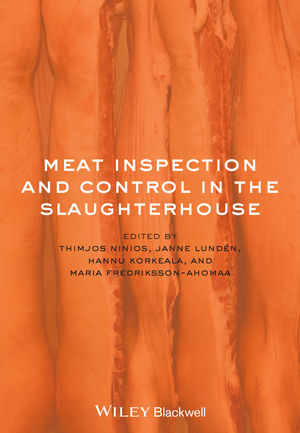
Enter any protein-processing plant, and you are likely to come across a very visible emphasis on food safety and sanitation. Within that food-safety program, processors have many different subset requirements, ranging from sanitation and pathogen control to equipment design and pest control.
Infestation by pests doesn’t often make the headlines where the processing arm of the food chain is concerned (typically, the public hears about pest infestations in foodservice or retail establishments), but many times pests are the source of pathogens and the cause of other food-safety related problems.
Processors may have a pest-control strategy in place, but experts on the topic say that the best way to handle the threat of pest infestations is to establish a systematic, written program that documents prevention steps and records results. Several universities and associations offer guidance for processors who want to improve their approach to pest control, via seminars and Web resources.
Kevin Keener, Ph.D., P.E., food process engineer, extension specialist and associate professor of Food Science at Purdue University, advises processors via the extension’s “A Pest Control Program” publication, to assess the personnel they have on hand and what expertise they have in terms of carrying out a pest-control program. If the personnel and expertise is not present within the company, then the processor should consider contracting out the program. Either decision comes with its own set of positives and negatives, as set forth in Figure 1 (courtesy of the Purdue Extension program).
A solid integrated pest management (IPM) system is a necessity for any processor, and it must be part of the company’s food-safety focus, even though it often operates on its own platform. The University of Arkansas Division of Agriculture, in its “Food Manufacturing, Processing and Storage Pest Control, Classification 7, Training Manual,” defines an IPM system as “the integration of chemical, physical, cultural and biological controls into a system that minimizes health, economic and environmental hazards. Some have stated pesticides are to be used as the last resort or as a method to correct a serious problem.”
A proper IPM will contain six different action items that processors need to incorporate into their pest-control framework, according to the Purdue Extension’s “A Pest Control Program” publication.
--Pest control procedures must be written down in detail, including frequency of action.
--Recordkeeping must be accurate and up-to-date, and it must include inspection for evidence of pests in each area of the plant.
--Responsible employees (or contract employees) must be put in charge of doing the work and signing of on the reviewed records.
--Deviations must be configured based on sound expertise and analysis of the allowable limits for each individual situation.
--Corrective measures must be planned, written down and enacted whenever there is a deviation.
--Verification and validation of the effectiveness of the corrective measures and the inspection must be present.
Processors should begin the program by having the entire plant inspected by a pest control expert” again, either in-house or contract” to objectively determine and identify any pest problems. Inspections should occur at regular, scheduled intervals, regardless of the severity of any problems that may occur.
According to the Purdue Extension publication, physical controls, including proper facility and equipment maintenance and repair, as well as overall cleanliness of the facility and its surroundings, must first be established.
After that, a wide variety of mechanical traps and deterrents can be installed to rid the plant of any pests or stop them from becoming a problem. While an IPM program does not eliminate the need for chemical control (pesticides), the University of Arkansas training manual warns that “excessive use of management practices such as pesticides may reduce profitability, create potential worker hazards and stimulate pesticide resistance.”
Food processors and distributors must realize that many IPM decisions have far-reaching consequences beyond the current time and location. The key to successfully incorporating an IPM program involves understanding factors that regulate systems, monitoring, maintaining good records and using this information to make sound management decisions.




Report Abusive Comment